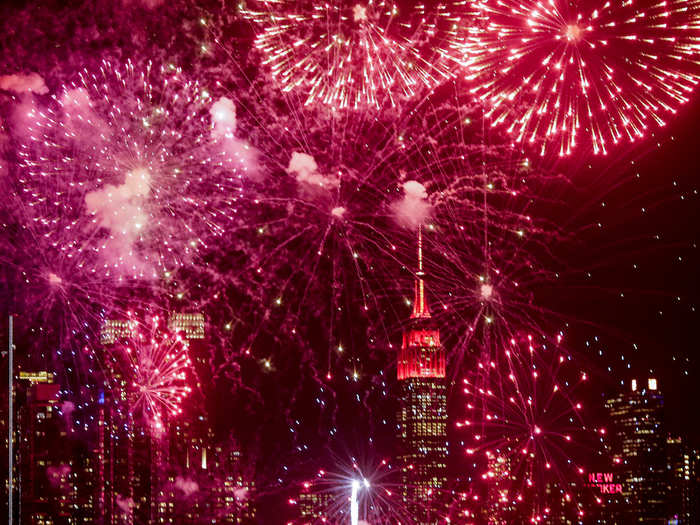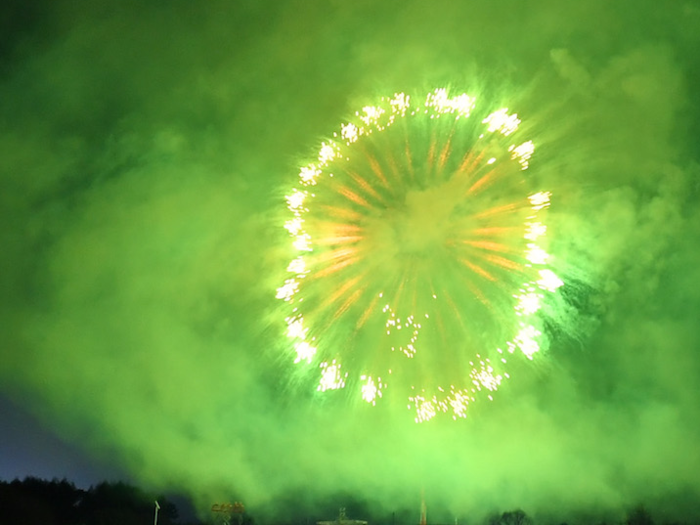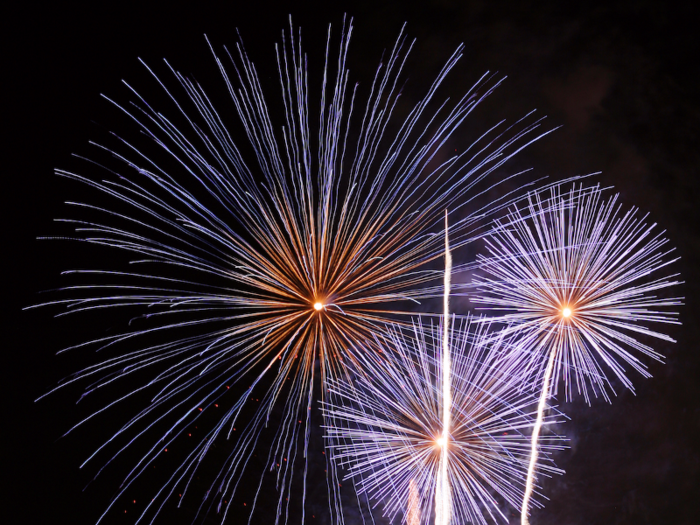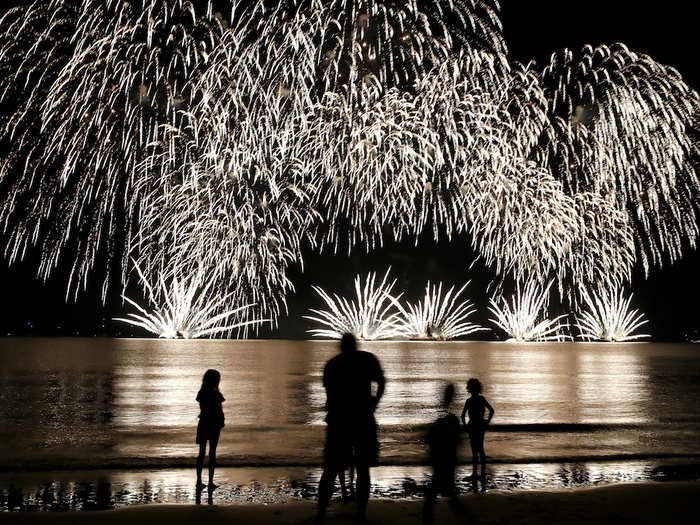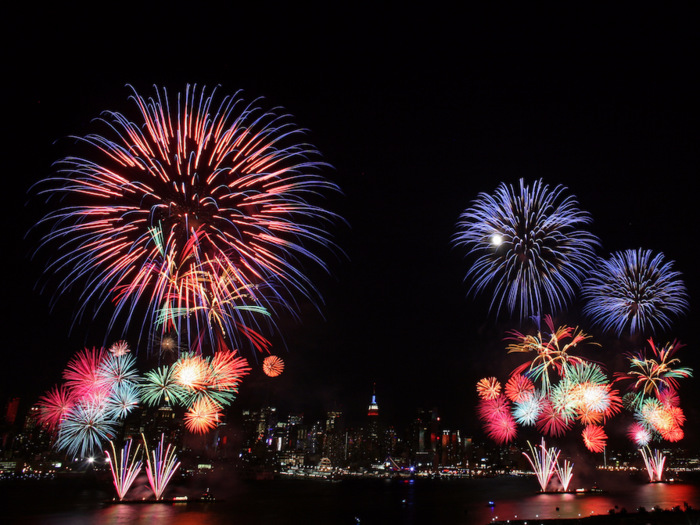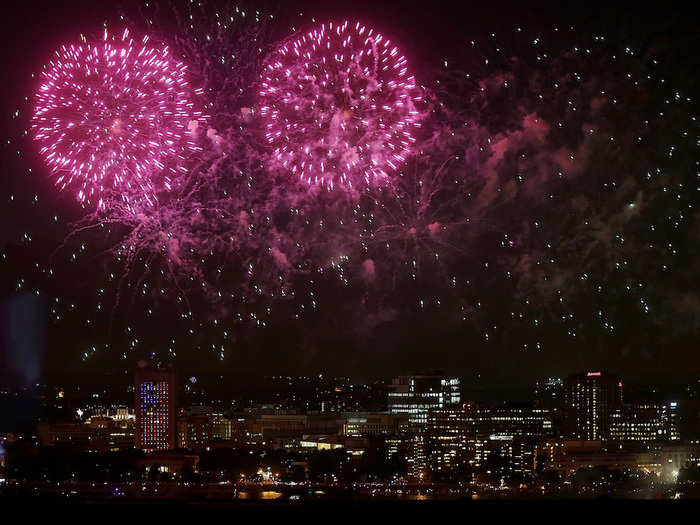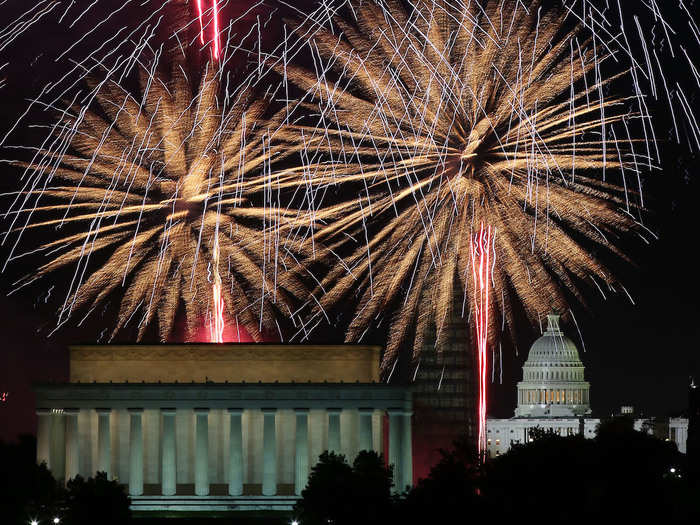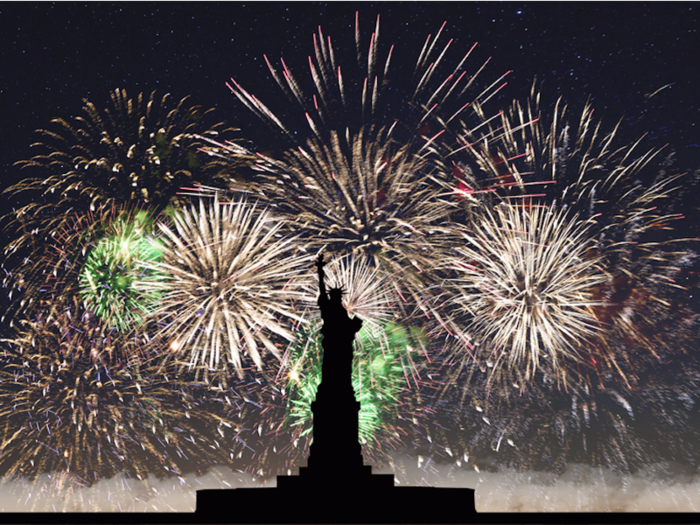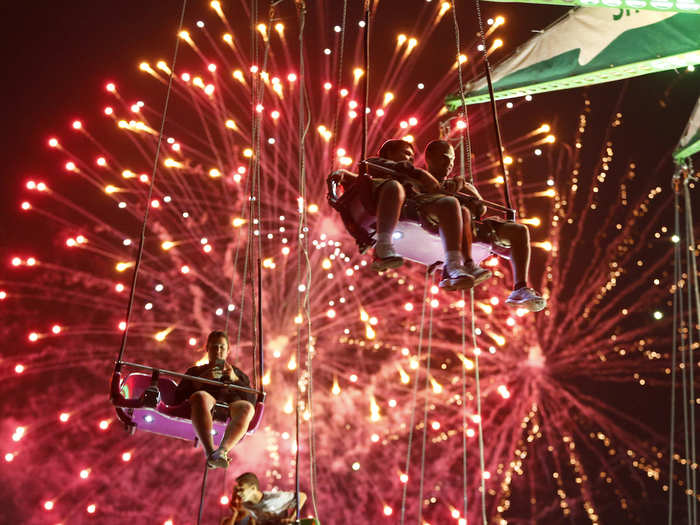Red fireworks come from a common element called strontium.
Green fireworks are a result of barium salts exploding in the sky.
Most green fireworks are made from barium nitrate, which is toxic to inhale, so it's not used for much else, though it can be an ingredient in grenades.
Blue hues are still the biggest challenge for fireworks makers to produce. They're made from copper.
"Blue is still kind of the unicorn of fireworks manufacturing," Tockstein said. The temperature of the flame has to be very precise, otherwise you lose the coloring.
"There's kind of a physics and chemistry limitation that prevents you from getting a good blue," he said.
White light is made from aluminum or magnesium.
These chemical elements have some of the highest burn temperatures. By adding them in to other color creations, you can create lighter hues.
A newer effect in fireworks is called "ghosting": It's basically a layering system of rolling different colors on top of each other inside each shell.
Some of the fancier ghosting displays can make colors look like they're dancing and moving.
"It's more of the artistic side of pyro," Tockstein said.
Eventually, what goes up must come down. The firework shell that brought lights into the sky falls to the ground as burnt cardboard.
Tockstein said that's one of the main reasons to enjoy fireworks shows at a distance.
"A shell itself is basically a sphere of cardboard," he said.
Once the shell breaks, it falls to the ground as charred remains. It's perhaps the least exciting part of the show, but for the people setting everything up, it's a sign the end of a long workday is near.

